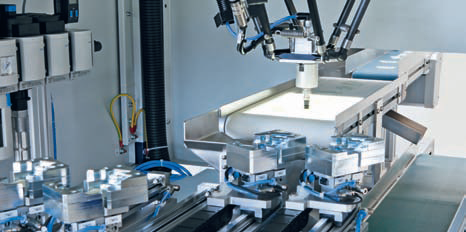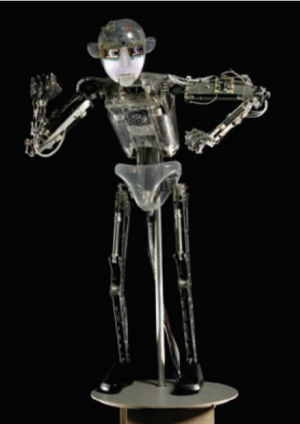“Can you create a flexible feed system with which we can quickly change over different types of plastic covers by simply pressing a button?” This was the enquiry that Heinrich Halling, director of operating equipment fabrication at Tyco Electronics in Speyer, Germany, sent to special machine manufacturer ifc intelligent feeding components. The result was the ifc-flexfeeder which reduces setup time to zero.
500 pieces of control unit A today, 200 pieces of control unit B tomorrow, and 500 pieces of control unit C the day after tomorrow – the broad range of variants required by the automotive industry necessitates various sensors in small batch quantities. This can make system setup more time-consuming and expensive.
Eliminating bowl feeders
Tyco required a feed system with which at least six differently shaped control unit covers can be flexibly and correctly fed to the downstream assembly station. The control unit covers are laser welded to the plastic housings at this assembly station. A handling unit upstream of the feed system separates the plastic covers and forwards them to the ifcflexfeeder on a conveyor belt with integrated illumination.
For Heinrich Halling, there was no alternative to the ifc-flexfeeder solution: “We would have needed at least four bowl feeders for the six different types of plastic covers, and would have paid a lot more than we did for the complete ifc-flexfeeder system. And in addition to this, we’re now ready for new variants as well.”
The control concept also fits in perfectly. New types are extremely easy to parameterise and configure. “Positions, sequences and settings are now entered exclusively at the front-end display FED”, explains ifc managing director Andreas Schirmer.
Zero setup time
Tyco saves lots of time during normal operations. After all, changeovers are required as many as five times on some days. “With a conventional bowl feeder solution, we’d have setup times amounting to three to five hours for each type of plastic cover due to mechanical adaptations and adjustments. With the ifc-flexfeeder we only need 10 minutes. And we’re now able to complete changeovers by simply pressing a button”, adds Halling. Furthermore, storing and keeping track of the interchangeable feeder bowls and other parts took up space and time.
Integrated camera
The camera system SBO..-Q from Festo determines the position and angle of rotation of the parts and forwards this information to the robotic controller CMXR. Incorrectly oriented covers are sorted out immediately via a chute, and are returned to the helical conveyor.
The Festo tripod robot system grips correctly oriented parts using a suction cup, removes them from the inspection conveyor and puts them into a centring station. A slide unit advances the centring gripper out of the tripod’s handling section. From there, the laser welding station removes the precisely positioned plastic covers in order to accurately position them for downstream welding to the housing.
Tripod robot
As a result of its minimal moving load, the robotic handling unit is dynamic, while its rigidity is due to its pyramid-shaped, closed design. The closed design is achieved by means of three double rods that ensure that the flange plate is always kept in a horizontal position. The axes and motors are stationary while servomotors of various sizes are used as drive units. Contouring applications in 3D space are made possible thanks to three-dimensional interpolation in Cartesian space.
Ready-to-install solution
“As a ready-to-install solution in combination with the tripod robot handling unit, position detection with the SBO..-Q camera provides the necessary degrees of freedom for fast, reliable and accurate transfer of the plastic covers”, explains Schirmer. Tripod kinematics provide assembly cell design engineers and system integrators like ifc with a quick and efficient alternative to conventional Cartesian gantry systems and SCARA robots.
The tripod consists of standard components from the Festo modular system. Its engineering design makes the tripod more easily accessible within the working area than Cartesian or SCARA robot, it’s easier to teach in, and it’s very competitively priced in comparison with all robot systems. This handling unit is the ideal solution for the ifc-flexfeeder, and the ifc-flexfeeder itself is the ideal solution for Tyco Electronics. Tyco expects the system to be amortised within six to twelve months.


















